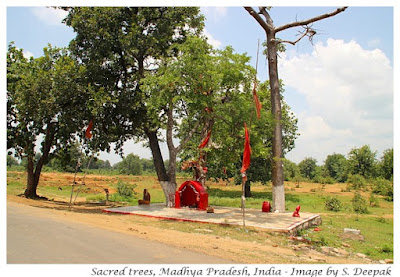The book “The Island” by Victoria Hislop is a story about 4 generations of a family from Plaka (Crete, Greece), marked by love, betrayal and leprosy. It is also about the world of Spinalonga, where persons with leprosy in Greece were exiled for about five decades during the first half of the 20th century.
Isolation of Persons with Leprosy
From prehistoric times, communities across the world had banished persons with leprosy to the outskirts. In early 20th century, developments in microbiology had convinced the doctors that isolation of persons with leprosy was necessary to prevent the passage of infection to others.
Islands were a natural choice for their isolation. Countries had made laws that asked for compulsory shifting of persons diagnosed with leprosy to the designated isolated areas. Thus, children were taken away from their parents, mothers and fathers were taken away from their children, and forced to live in such isolated places. If women in these places became pregnant, they were forced to undergo abortions and if they had babies, these were taken away and given for adoption. These laws were scrapped only around 1960-70s, as new medicines to treat leprosy had become available.
Last year, I had visited the Nagashima island in Japan (image above), which was also used for the isolation of persons with leprosy. There I had heard about Spinalonga island in Greece, for the first time.
The Island by Victoria Hislop
"The Island" is the story of Eleni, a primary school teacher, her husband, Giorgis, a boatman and their two daughters Anna and Maria, who live in Plaka on the island of Crete. Giorgis supplements his income by carrying supplies to the leprosy-island of Spinalonga.
In 1939, Eleni and one of her students, Dimitri, are diagnosed with leprosy, and are forced to leave their families and shift to Spinalonga. After a few years, Eleni dies. Her daughters grow up with Giorgis. Anna marries Andreas, son of a rich land-owner. Maria is planning to get married to Andreas’ cousin when she is diagnosed with leprosy and forced to shift to Spinalonga.
It is the time of discovering new medicines for treating leprosy and a few years later, the persons are no longer forced to live in Spinalonga because the disease can be cured. Maria returns home and marries a doctor whom she had met in Spinalonga. Anna has a baby girl, Sofia, but has problems in her marriage, and a tragedy waiting for her.
The story is told in flashback with Alexis, Sofia’s daughter who has come to Plaka to learn about her mother’s family.
Comments
The Island is a well-written family saga with strong women characters. For me, its most interesting parts were the descriptions of the life in Spinalonga, including the stories about testing of new medicines for curing leprosy.Clearly the author had done a huge amount of research to present a well-balanced picture about the situation of leprosy in the early 20th century Greece. Its strong point is that the book is never didactic, and the aspects about leprosy are well woven in the story. While talking about loss and exile, it also tells about love, friendship and solidarity.
Conclusions
The Island was a very successful book. It was converted into a 26 parts Greek-TV serial. Since then Hislop has written a few other books, which have also been successful. At the same time, she has become an ambassador for LEPRA, the British association working for the fight against leprosy.This book brought the attention of Greek authorities about the unique history of Spinalonga, which is trying to become a UNESCO World Site of Humanity’s Heritage.
I have heard many heart-breaking stories of lost families and lost children during my travels in the old leprosy sites, though there were also some stories of hope and reunions. Though in most countries, the laws regarding forced isolation were changed during the 1970-80s, persons who had lived away from their families for decades, had often continued to live in their old leprosy centres, because those prisons had become their homes where they had forged new bonds of kinship with their fellow companions.
Earlier this year, while travelling in India, I had met Chait Singh who had been forced to leave his village and live an ashram, because he had leprosy. While telling me about his village, his eyes had filled with tears. This post is dedicated to him and to all those persons who continue to be exiled because of continuing prejudices and stigma against leprosy.




























































